More than 6,500 pictures were entered this year into Close-up Photographer of the Year (CUPOTY), from 52 countries. There were seven categories: Animals, Insects, Plants & Fungi, Intimate Landscape, Manmade World and Micro (for images created using a microscope), plus Young Close-up Photographer of the Year, for entrants aged 17 or under.
Whittling down the entries was the job of expert judges Sue Bishop, Matt Doogue, Ross Hoddinott, David Maitland, Robert Thompson and Keith Wilson.
Tracy Calder, co-founder of CUPOTY, said, ‘The standard was incredible! Yet again, entrants have shown that close-up photography can help us see the world anew and discover beauty in subjects that are often overlooked.”
Find out more about the competition, and the top 100 images from this year's competition, on the website.
To view the images as a slideshow, click on the arrows in the top right hand corner of the photos below.
Winner: Animals (and Overall Winner)
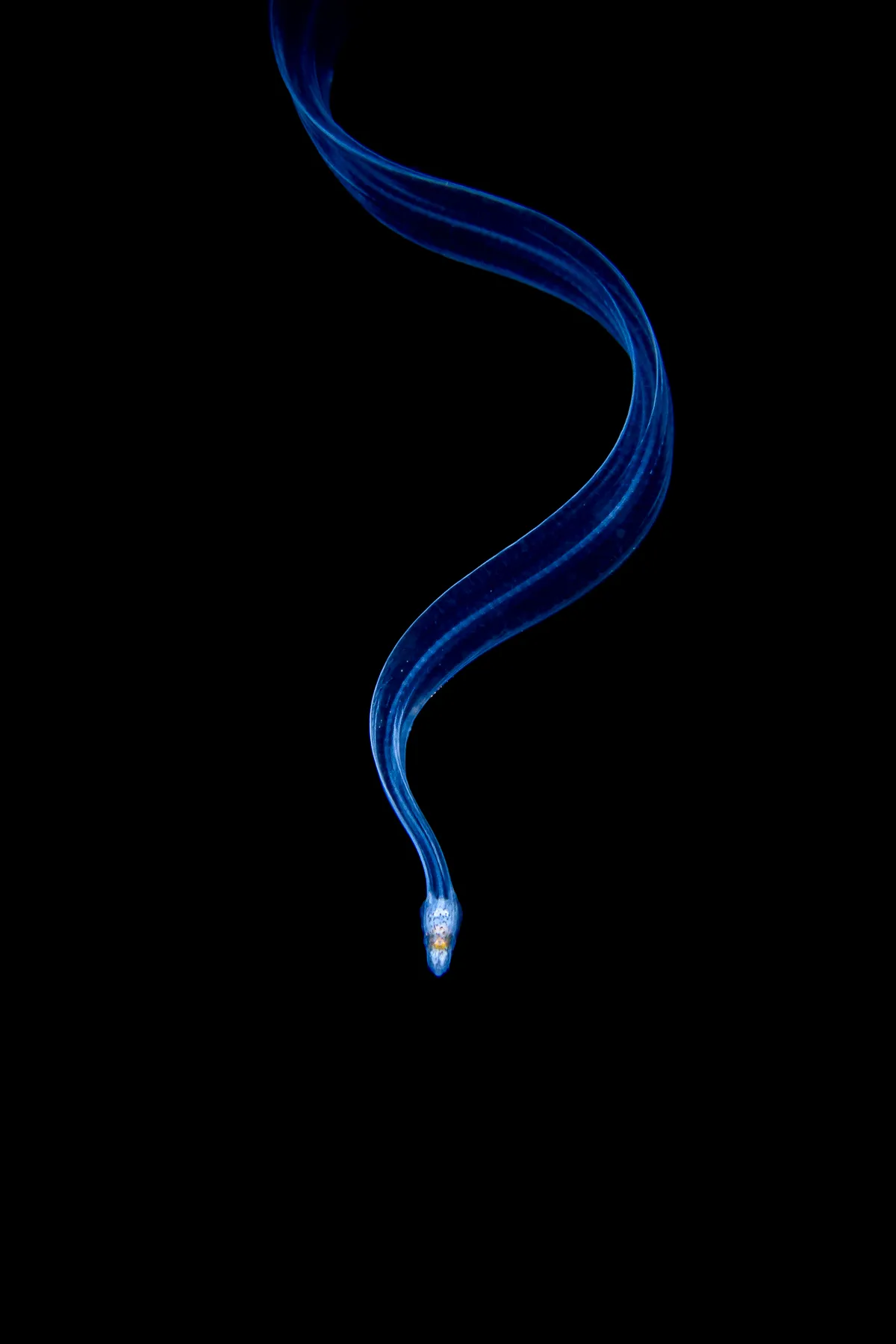
‘I spotted this eel larva off the island of Lembeh (Indonesia) during a blackwater dive. Blackwater diving is essentially diving at night in the open ocean, usually over deep or very deep water. Divers are surrounded by darkness, with only a lit downline as a visual reference. Peering through the darkness with your torch can be quite stressful the first time you do it, but it gets fascinating very quickly.
What makes blackwater diving so magical is the abundance of rarely seen planktonic creatures you spot as they take part in one of the largest daily migrations of any animal on Earth. After sunset, small pelagic animals (like this larva) rise close to the surface to feed where the sunlight has allowed planktonic algae to grow. At sunrise, they dive into the depths and stay down there during the day to escape predators.’
2nd place: Animals

‘I was preparing to take pictures of bogbean (Menyanthes) at the Turjanos nature conservation area near Kisőrös, Hungary, when I glimpsed this composition in the marshland. I carefully set up my tripod, and prayed for the spider not to move. It allowed me a few pictures before disappearing into the foliage.’
3rd place: Animals

‘This common toad (Bufo bufo) took a liking to me, probably because I looked like a frogman myself. He didn’t stop following me during my two-hour dive in the Buèges karst spring (Hérault, Occitanie, France), so he became the perfect model.’
Winner: Insects
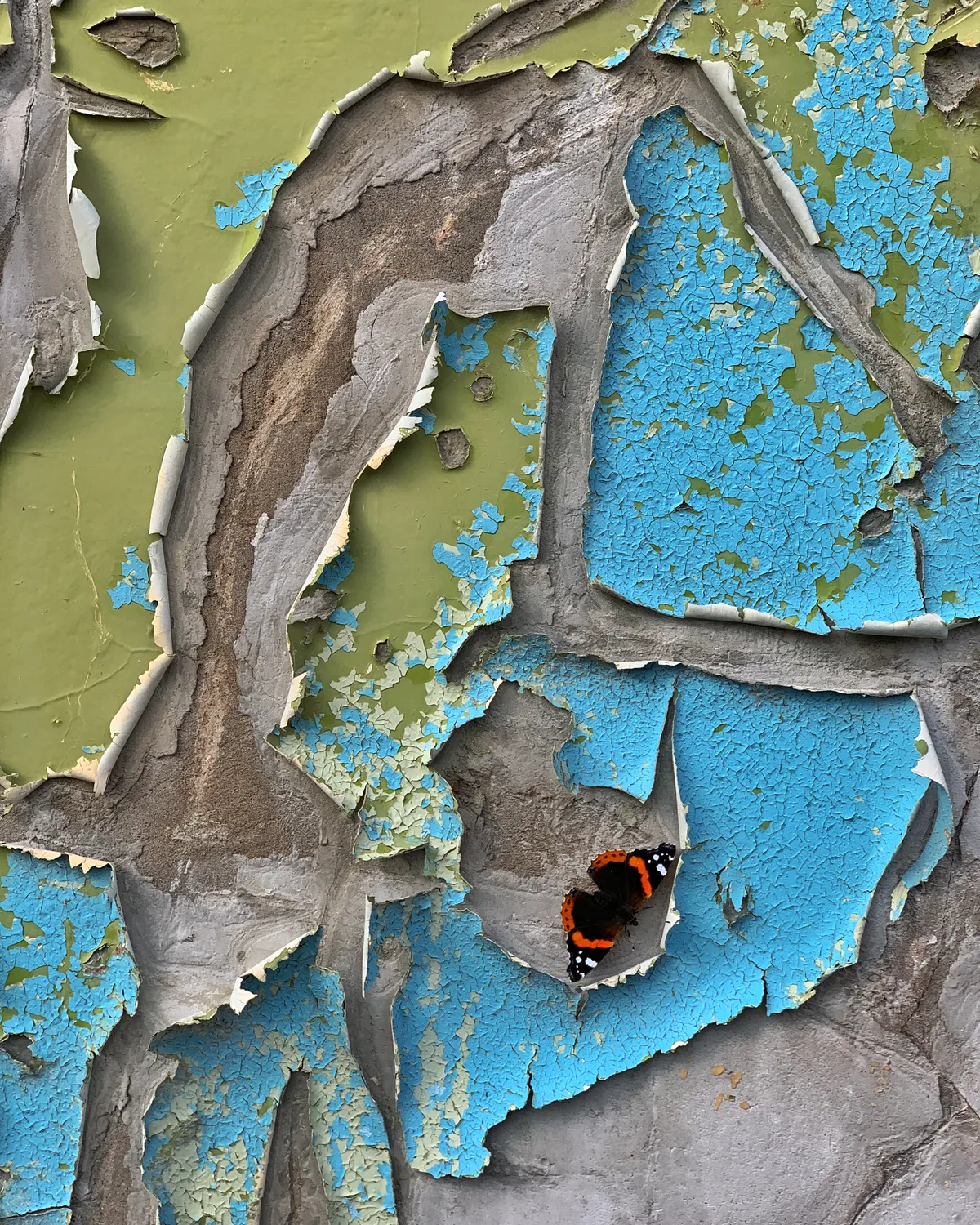
‘I was visiting Goole, the town where I was born, in November 2018 as my Dad was very ill in hospital. To take my mind off things I went for a walk with my wife Justine. There had been no time to pack really so all I had with me was my iPhone XS. We were walking towards the docks when I saw some beautiful peeling paint on an abandoned building site. I went over to photograph it when Justine asked if I had noticed the butterfly too. I hadn’t as I was miles away, but had already captured this image serendipitously.
It felt a surreal moment as my dad particularly liked butterflies and always commented that they represented relatives who had passed away, making it even more poignant. Unfortunately he passed away shortly after, so this is a special photograph for me.’
2nd place: Insects
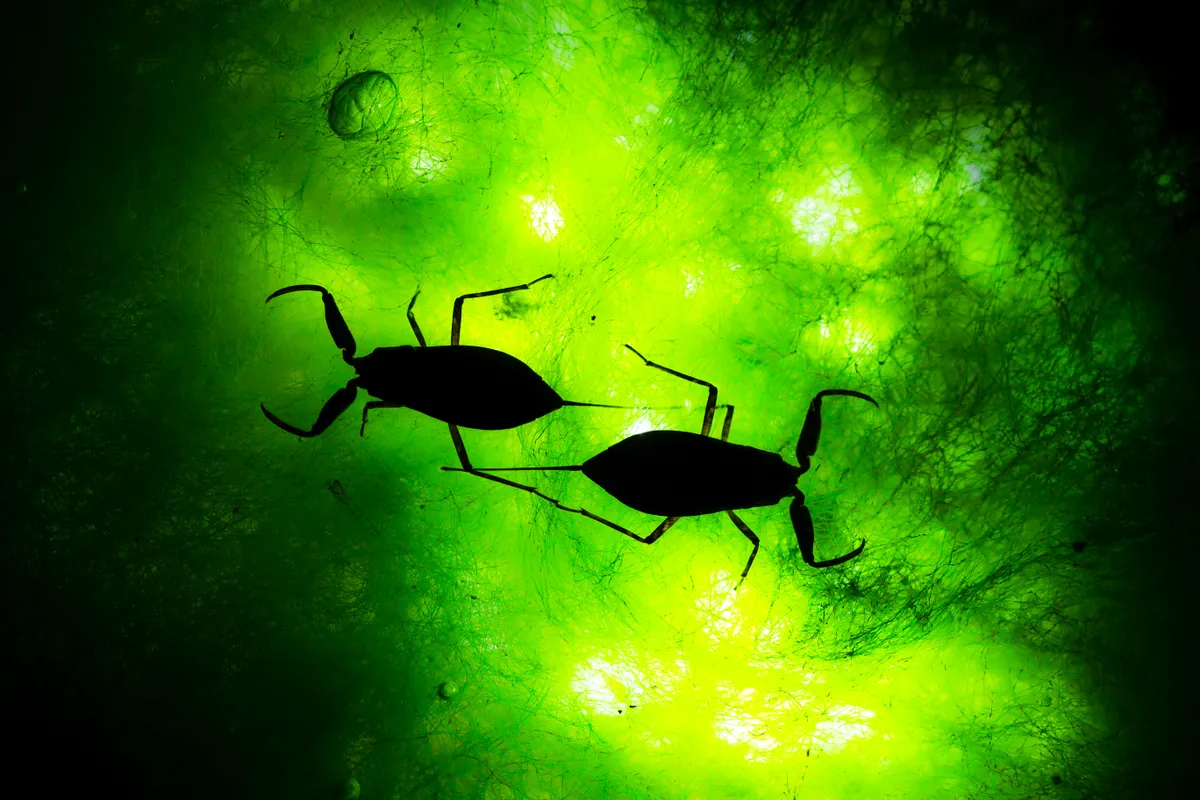
‘When night falls, water scorpions rise to the surface of the pond and begin to interact with fellow water-dwelling creatures. While they might have a sinister appearance, these insects belong to the genus of bed bugs, and aren’t actually dangerous. The caudal tube that helps them to breathe (and resembles a tail) is harmless. The pincers, however, help them to grab their prey, which they then kill with their beak. To show their wonderful outlines, and reduce them to silhouettes, I placed two flashlights under two water scorpions in the pond.’
3rd place: Insects

‘Bioluminescence is abundant in the Bornean rainforest at night, a feature that becomes evident as soon as you turn off your headlamp, but few organisms emit a light as strong as Lamprigera beetles. Close relatives of fireflies, Lamprigera differ in that the females are wingless and produce a bright and steady greenish light from the tip of their abdomen. During a night walk in the mountains of southern Sarawak, I found this large specimen crawling through low vegetation, presumably on the hunt for snails, their preferred prey. To capture the bright continuous trail of light from its abdomen, I used a long exposure as it made its way along a stick, coupled with a single rear-sync flash.’
Winner: Plants & Fungi
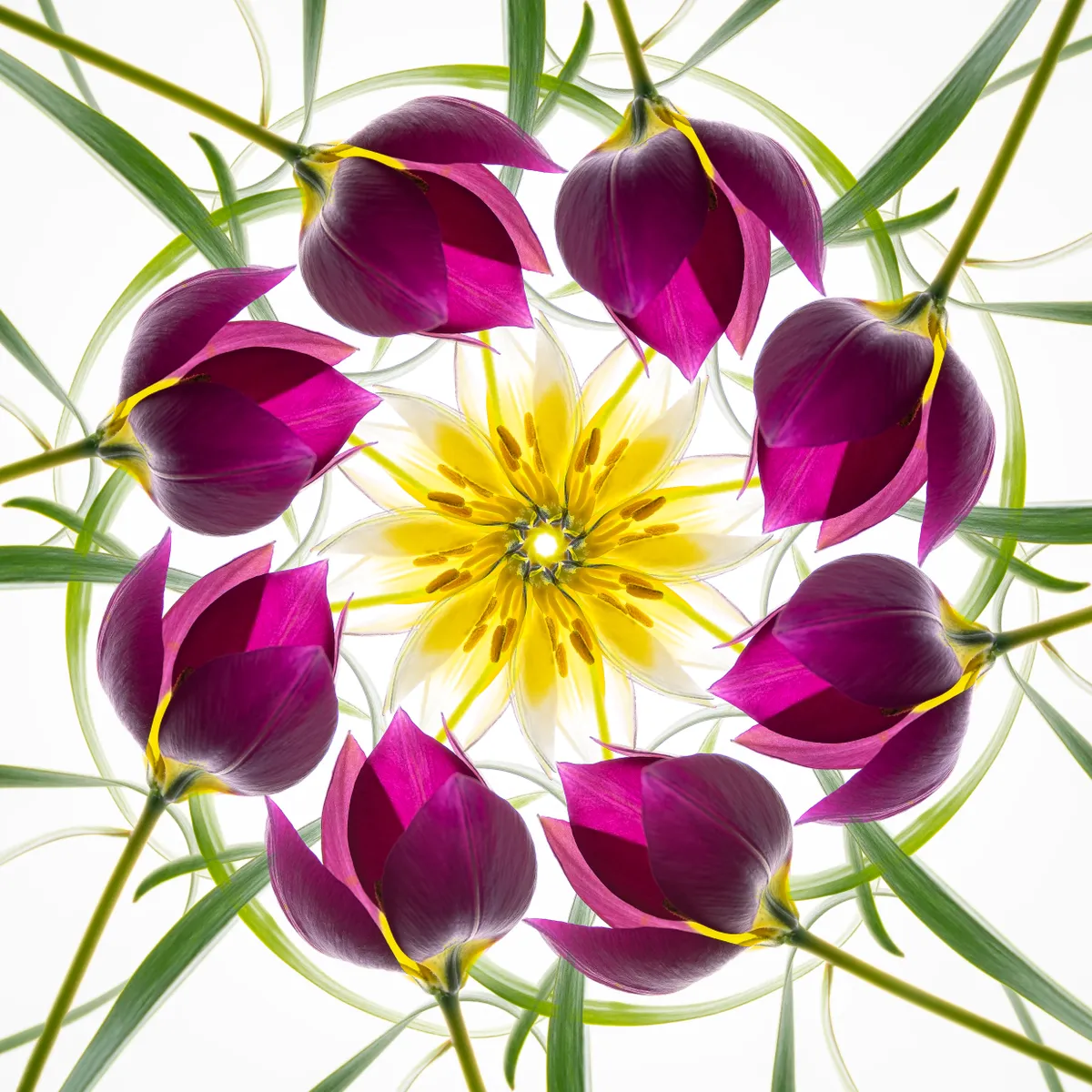
‘My goal with this photo was to create art that challenges the viewer to look at the natural world with fresh eyes. I collected some miniature tulips from my garden and placed them on a lightbox. The vivid yellow centres were so striking that I decided to create a composition that would show both a side view and a centre view of the plants.
The tulips were photographed and rotated at eight equidistant positions to complete a full rotation; it’s a technique that I call Precise Incremental Rotation. An in-camera multiple exposure of eight frames was used to create the effect.
The characteristics of the tulips are really emphasised when rendered within the rotational symmetry of the mandala form. The curved green leaves make a great frame for the flower, while the centre of the design highlights the tulip’s anthers.’
2nd place: Plants & Fungi

‘This image is a stack of 34 focus bracketed images. It was taken in February 2020 in a mixed woodland in Buckinghamshire, UK. It shows a line of 2.5mm high, fruiting bodies of the slime mould Metatrichia floriformis growing on a decaying beech trunk.
I always use a x10 loupe with built-in LEDs to examine slime moulds and to help me pick out the optimal composition. Initially, I liked this group because it showed different stages in their development. But when I looked through the magnifier, I noticed that the fruiting bodies resembled people standing in a line – the holes in the stems looked like little legs!’
3rd place: Plants & Fungi

‘Almost every year, in early spring, I visit a place in Austria where one of the early bloomers – the dog’s tooth violet (Erythronium dens-canis) – grows. To ensure the best light I get there early, but this means that the blooms of the violets are still closed. To my mind they look even more delicate and special in this state, so in this instance I chose to emphasise their delicate nature with the help of a torchlight to create nice, dreamy bokeh. I always use a relatively wide aperture to achieve soft bokeh, but it makes it hard to get the focus right. To assist me in this task, I use Live View with magnification, and focus manually.’
Winner: Intimate landscape
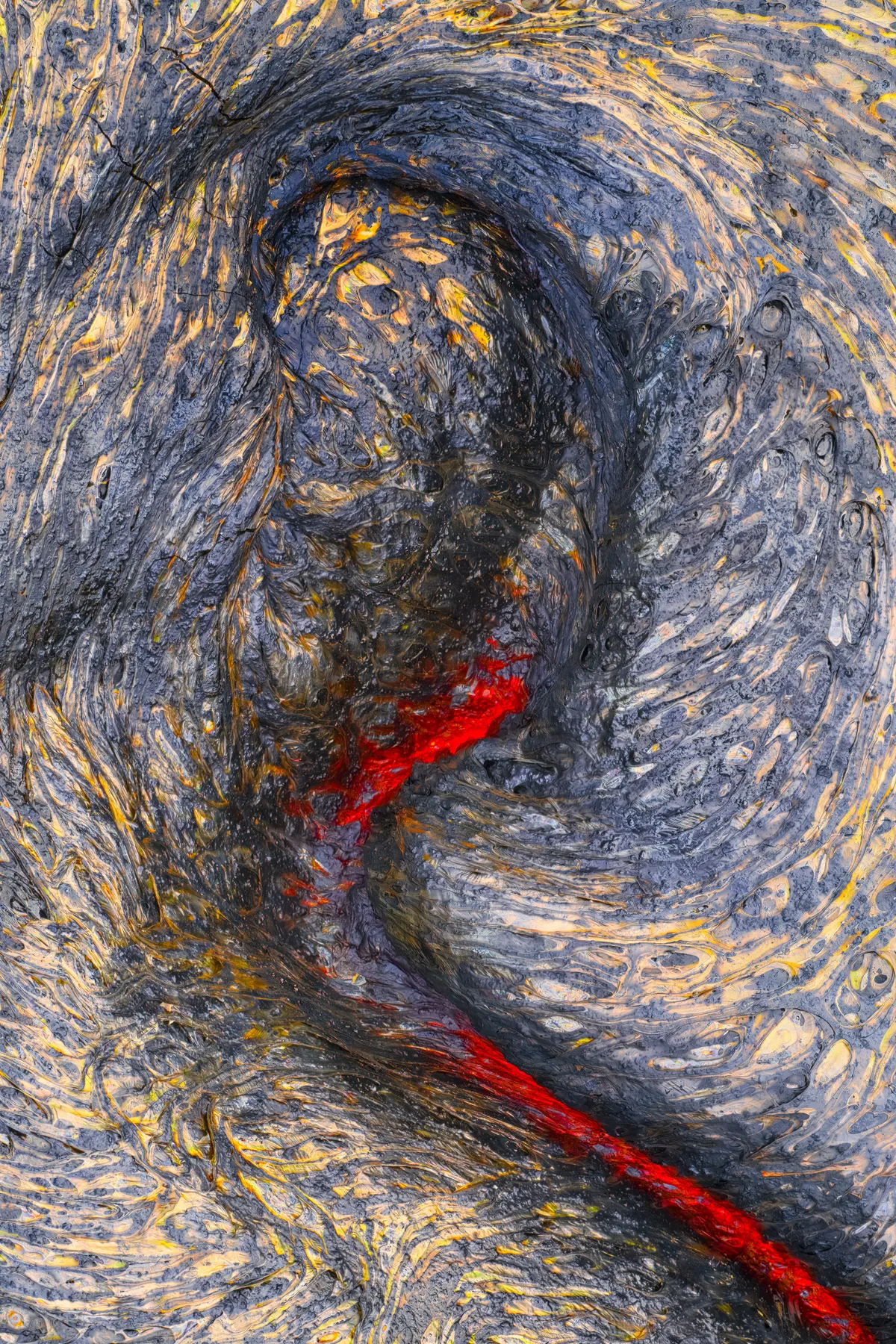
‘Trekking across the baking lava of the Kalapana lava field in Hawaii, was an experience not to be forgotten. Incredible organic structures of black, blue, gold and bronze seemed to overwhelm the senses, but eventually the increasing presence of sulphur dioxide and other acidic gases, acted as a reminder that I was walking on an erupting volcano. Heat was rising from every crack in the rock, and before my very eyes the rocks would turn orange and suddenly begin to flow.
New land, rock and stone was being created just metres away from me. I had just seconds to capture this image of a lava flow setting into the form it would retain for millions of years. The glass-like rock was still glowing below the surface, but soon enough a new lava flow started centimetres from my feet and I was forced to retreat.’
2nd place: Intimate landscape

‘Close to where I live there is an old abandoned mill by a pond. Water flows down the mountain into a giant cauldron here, and during winter it creates huge icicles. The problem is how to get there – there are no paths or rocks to step on.
Thankfully, I discovered a solution in the form of a portable fire ladder! Walking from the car to the mill took time, and was even harder because I was wearing thick clothes and carrying the ladder. To get into position I tied the ladder to a tree and used it to climb down. Once down there, I noticed that there was no mobile phone reception! As usual, I had no idea what I was going to find, apart from plenty of ice, but I wasn’t disappointed when I spotted this frozen air bubble inside an icicle.’
3rd place: Intimate landscape
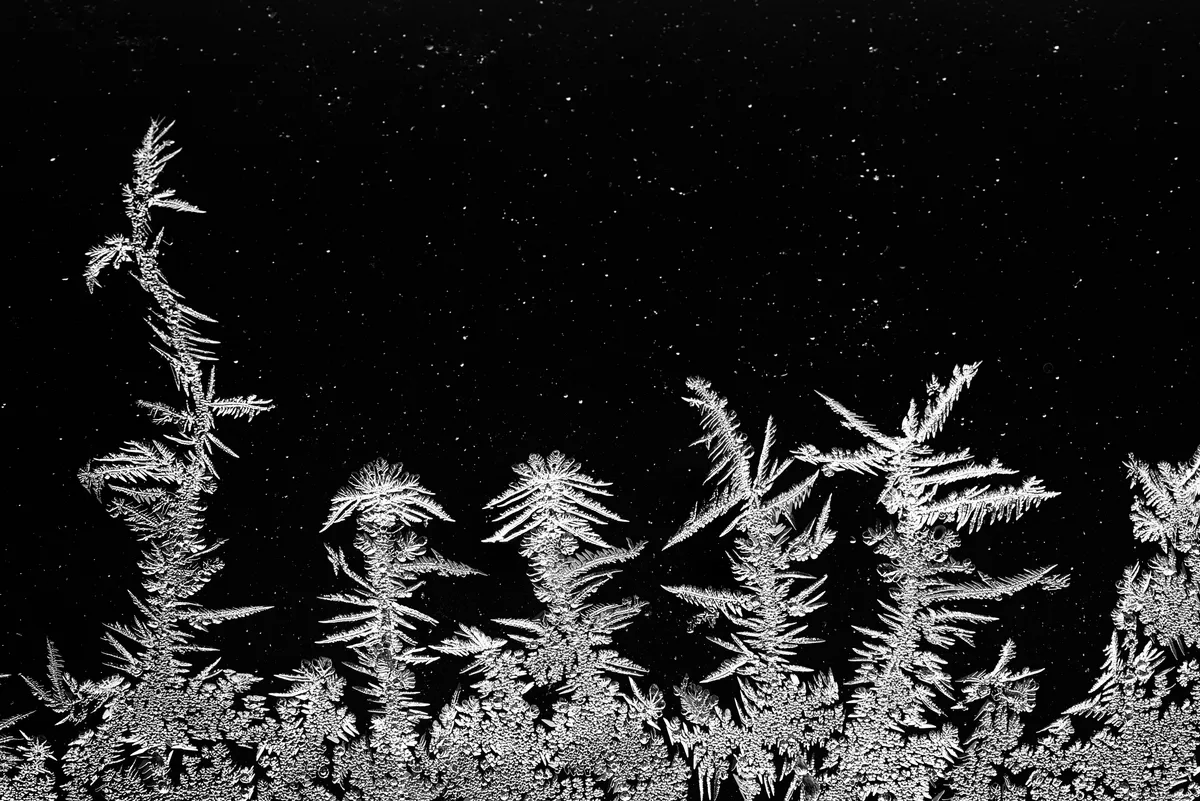
‘My house was fitted with thermopane glass in the summer. When winter set in, moisture became trapped inside the window due to a defect in the glass. One night it froze, creating beautiful ice crystals. The morning sun lit the crystals and a dark building in the background made the shapes stand out even more. The image reminded me of a Scandinavian landscape with pine trees and a sky full of stars.’
Winner: Young Close-up Photographer of the Year
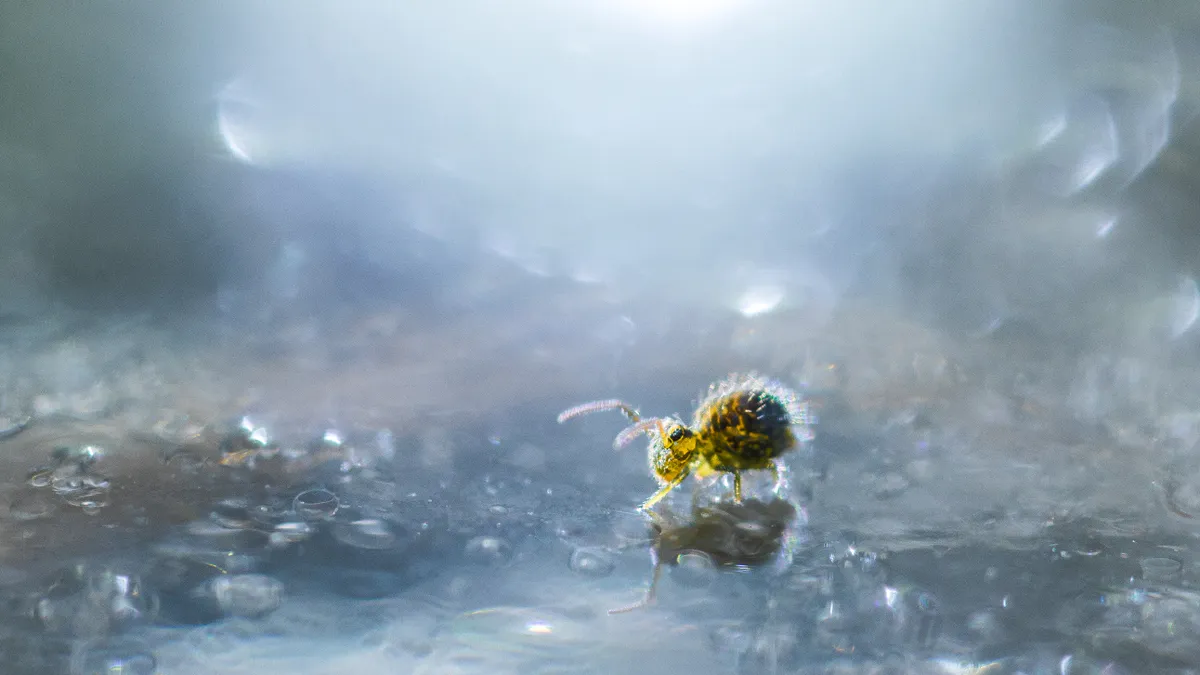
‘I regularly visit a meadow near my hometown of Csongrád-Bokros, Hungary, observing the site in all seasons. The meadow is grazed by Hungarian grey cattle, which keeps the place in relatively good condition. One frosty winter’s morning I headed out to take some extreme macro shots at the surface of some frozen water that had pooled in the tracks left by a tractor. Crouching down, I spotted some yellow globular springtails (Sminthurus maculatus) which feed in the sunrays reflected from the ice. I used LED torches to illuminate one of them, and came away with a picture that celebrates this tiny creature.’
2nd place: Young Close-up Photographer of the Year
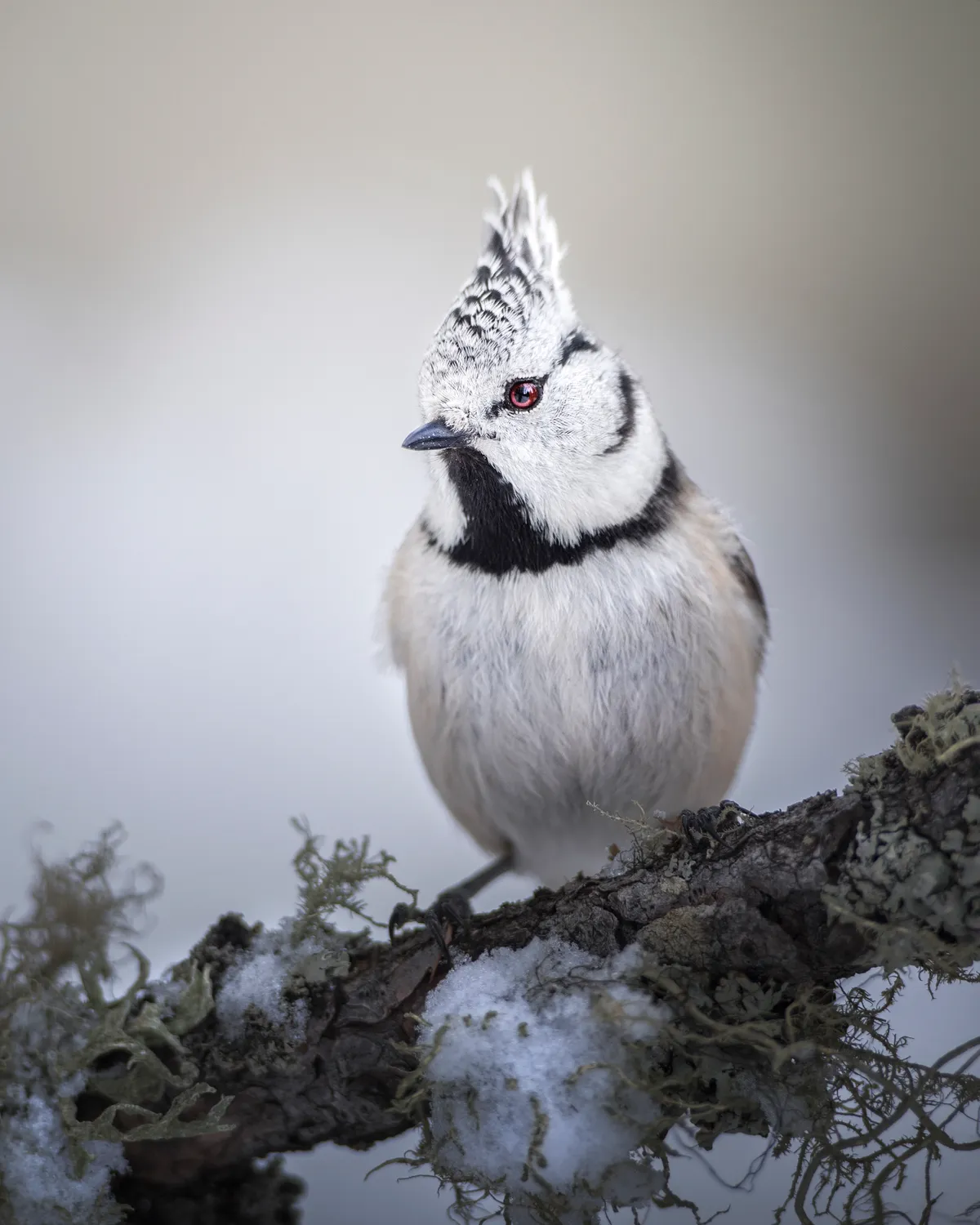
‘I had already photographed great crested tits close to home, but this time I wanted a picture of one against a blurred white background to make the red eye of the bird stand out. To create the picture I had in my mind’s eye I had to travel four hours to a wood in Switzerland. It was very cold and the snow covered almost everything. When I arrived, I saw many birds in the wood, but no crested tits.
I walked for almost an hour in this beautiful landscape before I heard a familiar call. I stopped, took my camera out of the bag and waited, without moving. I couldn’t tell where the call was coming from. After a while a crested tit flew on to a branch right in front of me. I moved as slowly as possible, trying not to scare it away, and brought my camera up to my face. I was so happy to see the bird in the viewfinder. I focused on the eye and got a few nice shots.’
3rd place: Young Close-up Photographer of the Year
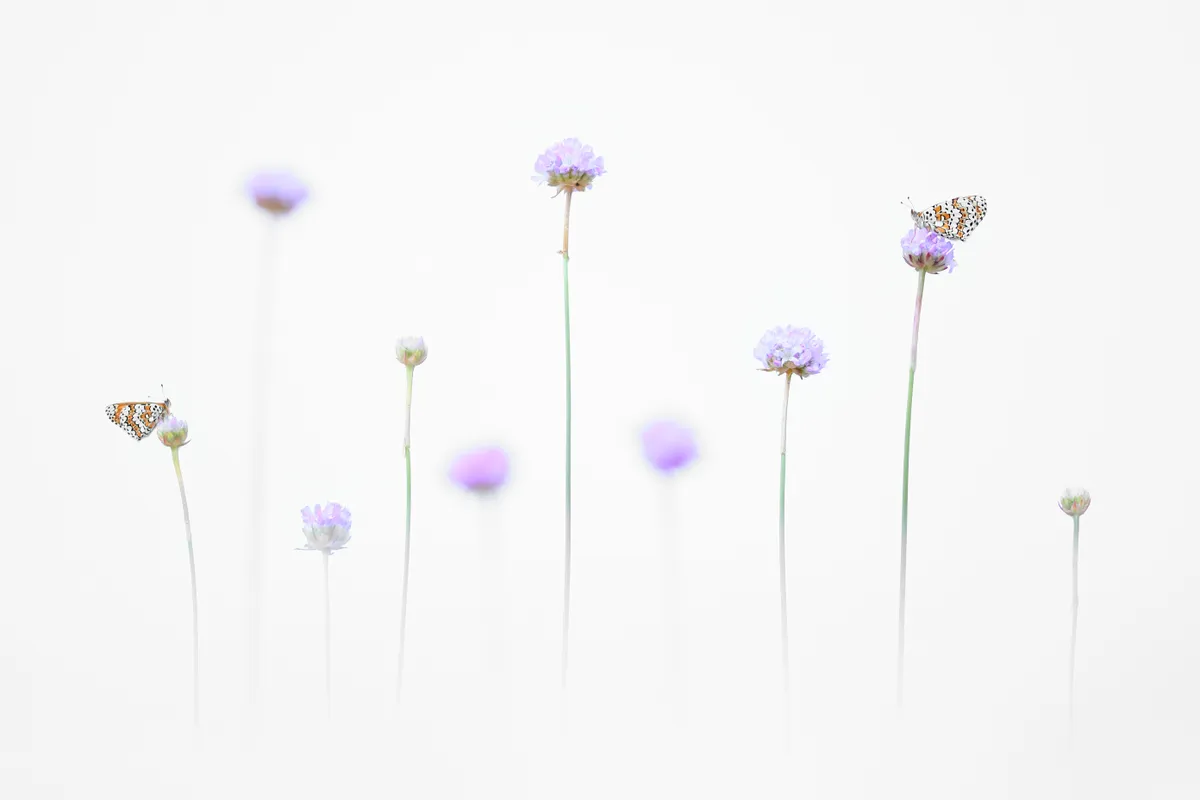
‘I live in the middle of nature. My house is surrounded by meadows, and every spring the flowers bloom, welcoming a multitude of insects – especially butterflies. Among the most frequent visitors are fritillaries – I often see them resting on the flowers of Armeria arenaria, and feeding on the nectar.
I wanted to capture the beautiful synergy between insect and plant so I arranged some flowers in a harmonious way, placed a white background behind them, and overexposed the image in-camera. The result is a pure photograph highlighting the simple beauty of butterflies and the plants that they depend on.’